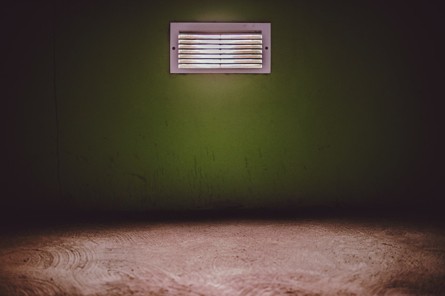Leaving your air conditioner unused for a while encourages mold to grow. By the time you notice that there may be mold growing in an air conditioner, things might have gotten terrible. First, if you see the moldy smell in your home, switching on the air conditioner confirms it.
You will likely notice the issue when summer comes, and you must use the unit. From there, you must hurry up and remove the mold spores, which can cause respiratory issues.
Having mold in an AC unit doesn’t mean you have to buy a new one. Still, the last thing you want is to leave it there. You don’t want to develop some sickness from a moldy air conditioner. In particular, an air conditioner’s black mold can produce poisonous mycotoxins
If replacing the entire air conditioning system is not an option, you can schedule to remove the mold yourself. It’s easy, mainly if the mold is growing in a part that’s accessible. This article will review helpful tips to help you get rid of mold in your ac.
1. Assemble All the Tools
Put everything you require in the cleaning process together, so you don’t get distracted. The materials and tools you will need are;
-
Bleach
-
Plastic bucket
-
Vacuum with a nozzle
-
Screwdriver
-
Scrubbing sponge
-
Garden horse
-
Sponge
-
Dishwashing soap
-
Commercial oil cleaner
2. First, Turn off Your Air Conditioner
The US Environmental Protection Agency recommends that you turn off your AC following suspicion that there is mold in your AC. Doing this ensures that mold spores don’t circulate in your home. It curbs the contamination.
3. Inspect the Unit
When inspecting the unit, you first unplug it for safety. Next, you can unscrew the front grille cover and unscrew it to pull out the filter that is under the grille. Use a flashlight to illuminate the inside of the AC.
Look out for clusters of brown, black, or green stains, indicating mold. If it’s not this, look for fuzz or powdery grey stain, indicating mildew growth.
Clean even the slightest appearance of stains on the hard surface inside the unit to ensure you get rid of all the mold. However, consider replacing the unit if mold covers over a third of the ac, including the wiring.
4. Disassemble the Exterior Cabinet
After ensuring that your tools are within reach, you can start opening the AC unit to start cleaning. Consult the manual on how to pull the exterior apart to access the interiors.
Wear a dust mask, gloves, and goggles before starting. Follow the following steps to start the most critical part of the cleaning process.
Step 1: Detach the window AC unit from the window. Use a screwdriver to remove the screws from the frame. You might require an assistant in this step since AC units are heavy. Take it outside and lay it on concrete or plywood.
Step 2: Get the grille and the filter from the front of the unit. Have a tab full of hot soapy water to soak the filter in. The soapy water should have bleach as well.
Step 3: Open the top and back of the cabinet. Again consult the manual on how to go about it.
Step 4: Use the vacuum to suck out the dust and debris inside the air conditioning unit. The nozzle attachments are handy when you get these parts since they help get to hidden corners.
Step 5: Spray the commercial oil cleaner on the U-shaped metal coils in front and back of the unit. Follow the manufacturer’s instructions for using the spray to ensure you get all the buildup. Getting rid of all the gunk on the coil eliminates breeding grounds for mold in AC unit.
Step 6: Get the garden hose and spray the coils to rinse off the oil cleaner. Rinse while avoiding the controls and the area near the electrical cords. The spray should come off with the dissolved gunk.
Step 7: Mix a few gallons of hot water with a half cup of bleach in a plastic bucket. Soak the sponge in the solution and start wiping inside the AC. The bleach kills stubborn mold spores in the air conditioner.
Step 8: Use the hose to spray the filter to eliminate all debris. Leave the unit for about 24 to dry before reassembling it.
Getting Rid Of Mold in Central Air Conditioner
Getting rid of mold in a central air conditioner calls for a professional. Just as it is with the window AC unit, it’s essential to shut off a central air conditioner when you notice a moldy smell.
The extent of mold growth determines how much work the cleaners will have to put in. There are specifications about what tool and materials to apply when cleaning central AC, so you should leave it to the experts.
How to Prevent Growth of Mold Air Conditioner
You may have succeeded in eliminating the mold in a central air conditioner, but that doesn’t mean it can’t grow back. Some moldy parts in the AC may be unreachable. However, you can do your best to prevent its rapid growth.
-
Vacuum the interior of the AC every few weeks to keep the dust away. Dust is a catalyst for the growth of mold in air conditioners.
-
Don’t shut off the AC unit, especially during hot weather. You have to leave it on when going on vacation.
Final Words
As a homeowner, your qualification on how much mold you should clean from your AC is limited. If your system has rampant mold, you might not have the tools and knowledge to clean all the mold. You might not reach parts like the fan motor casing, which harbors mold.
One solution you have is enlisting the help of an expert. It’s an expensive process, so you might as well consider getting a new system. Failing to clean mold in the air conditioner properly only exposes you to harmful elements.






